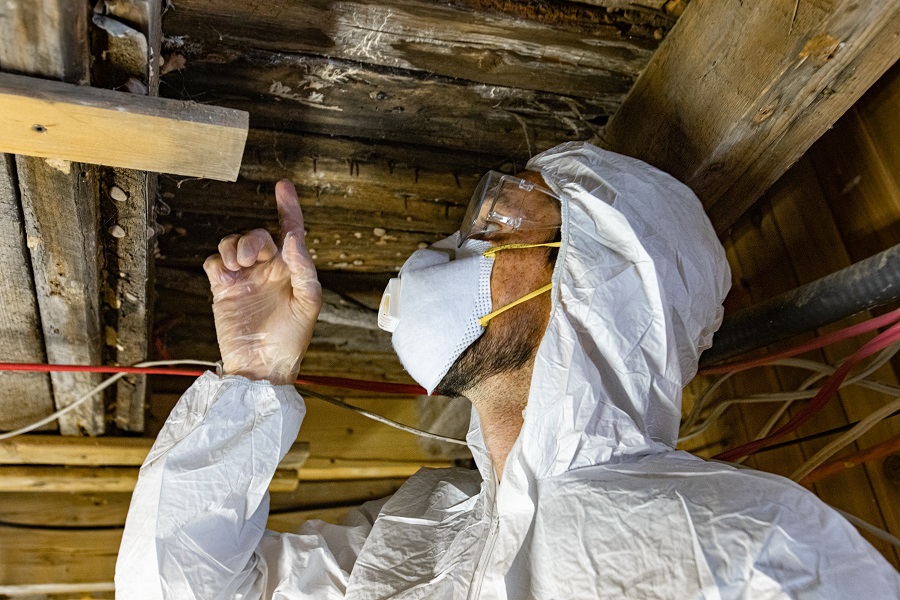What is dry rot?
Dry rot is the general word used for wood-decay fungus. As Mycelium eats wood, dry rot yields dust particles, decomposition of wood and dry rot thrive while wood is cracked by Sporocarp (fungi). Dry rot spores need a place to land and start a colony before expanding from the underneath wood. A lot of these spores are present in soil and old wood already infected by dry rot.
It also means that dry rot cannot live in so-called “humidified” lumber that is kept at 15% moisture with a wetted surface. While Dry Rot can be harder to spot, it is potentially more damaging than wet rot. It usually happens where you are not looking It could be under the plaster, under your floorboard, or in your loft. As a homeowner, it’s a good idea to understand the telltale signs of dry rot so you can act fast.
What is the difference between dry rot and wet rot?

Dry Rot Treatment and Services
What are the causes of dry rot?
A number of fungi cause dry rot. In Kent, the most common is Serpula Lacrymans. it can spread from your home’s walls to the floors, and even the plaster is not fixed soon enough. Blocking up your timber may save on heating/cooling costs, but it may also affect the structural integrity of your entire house. Dry rot hits when you have too much moisture in your timber. This attracts the fungus that is going to use this moisture to produce nutrients. The term “dry rot” is used to distinguish between “dry wood rot” and “wet wood.”
Wet wood grazes on a dry rot. In order to develop spore-bearing structures, the fungal spores need over 30% dampness to generate hyphae after this, however these hyphae merely need 20% dampness to last. These threads can turn into fungal bodies called mycelia, which can also extend to find more wood in stone and brick. The wood fibers (cellulose) are rotten or broken down by the fungus, and the water is removed. You’ll need a private survey to tell if your wood deterioration is caused by dry rot or another kind of fungus. This is important as the remedies for these damages can vary based on the actual cause.
The dangers of dry rot in Kent
Dry Rot Effect on your Property
Dry rot spreads so fast it can possibly cause you to lose your house integrity. Dry Rot is a fungus that attacks timber by breaking it down, causing timber to crumble. In serious circumstances, it can cause various parts of your house to fall apart. Dry rot causes the wood to become brittle and fall apart when it gets wet, but can only travel across brick or stone. This is why regular checks are highly essential.
Dry rot is a ravaging condition that affects your home and must be addressed immediately. When fungus manifests, you should call a Dry Rot Expert immediately to avoid an infestation and deal with the occurring damage quickly. If you think you might have a problem with dry rot, get a survey from Southern Damp Proofing today.
What are the Warning Signs of Dry Rot?
The earlier you discover dry rot, the less time and money you’ll need to spend treating it and initiating remedial works. A full assessment is recommended if you experience any of the following signs/symptoms.
The beginning of the dry rot cycle
Spores of dry rot are transported by the wind. They may be nocturnal but they will also feed on timber during the day if there are carried onto timber. When they feed on it, they will then germinate and create hyphae, if the timber is giving them enough nutrients to do so. As these hyphae expand and eat, they may enter a spider web-like array called mycelium. Mycelium might be light gray or solid white. They can even work their way into your property’s foundations and spread into the mortar, bricks and plaster to find new timber.
Your timber is damaged.
When dry rot is affecting your timber, it will become brittle and dry. This may at times make your wood fall. The first sign of dry rot is darkening of the wood. Scientists have discovered that dry rot can lead to something called cuboidal cracking. The Cuboidal Cracking is a natural timber feature that affects all timber species and can break the timber up to 50 mm width. The fungal deterioration will also spread further into the wood, causing hyphae the white fungal growth. Hyphae can look like cobwebs and is a common symptom of dry rot.
Your timber will smell.
If your timber is affected by dry rot, it will have a distinct, fungal, dank and musty odour. Dry rot is often not noticed until it has damaged structural elements. Just because there is a smell, however, does not mean that dry rot is present.
Your timber will have fungus bodies on it.
Dry rot is the most noticeable kind of wood rot and one of the final stages of fungal attack. Fruiting bodies like Mushroom can start to attach themselves to your wood. They happen when dry rot can’t feed on the timber anymore, and so the fungus needs to pump spores out instead.
Damp Proofing Can Help Prevent
- Rising / Penetrating Damp
- Ingress of Water
- Salt Crystallization
- Plaster Breakdown
- Damp Staining
- Wet Rot / Dry Rot
Contact Southern Damp Proofing Now to Speak With an Expert
Dry Rot Treatment in Kent
Only when the moisture is over 20% will a dry rot invasion take place. The first prevention step to eradicating the presence of the fungus is the monitoring of moisture levels in your property. Then the moisture levels will be under your control. Consult a professional for a proper treatment of your dry rot.

An expert can insert into your timber Boron rods. Boron is a radioactive compound, which is why our damp proofing experts all wear the protective clothing. Through our damp proofing expert team, we will be able to identify some dry rot problems and determine the seriousness of the problem. Dry rots are a serious problem and can lead to serious issues if left untreated. If dry rot is not treated promptly, it can spread across your property and do real harm. Our high-performance products and extensive experience allow us to efficiently address your damp proofing problems.* Please don’t be late Call 020 7971 1329 for today’s free survey and successful care if you suspect you have a problem with dry rot.
How can you prevent dry rot damage in Kent?
The first step of treating dry rot is prevention. Any wooded areas of the house that traps enough water and is subject to humidity/moisture ingress can result in a dry rot infestation. Here are some of the behaviors that would prohibit them from forming: It is your responsibility to ensure that there are no leaks in your house. Provide adequate, proper ventilation.
Ventilate the attic correctly and wrap it. Correctly ventilate crawl spaces. Waterproof the exterior of your home by sealing the basement and crawlspace floors with our durable, waterproof sealers. Check all flashing to make sure there are no leaks and water directed properly. Maintain clear sinks and downspouts. It’s a very good idea to check your pipes and heating system for leaks when using a wet system Owing to the humid conditions needed for dry rot fungus to be fed and germinated, the easiest way to reduce the possibility of dry rot is to decrease moisture levels. For example, if you have a pipe that is leaking, plugging the leak can help prevent dry rot.

Dry rot gets worse over time by its nature, it is important to contact us immediately if you think you have a problem. Southern Damp Proofing will be able to help you no matter what the nature of your damp issue is, email or call us on 020 7971 1329
FAQ’s
Where can dry rot grow?
How can I confirm that I have dry rot?
Is dry rot serious?
If dry rot is left unchecked what will happen?
Will dry rot stretch?
How wide is Dry Rot able to spread?
How do I discover how far Dry Rot has spread?
Can my dry rot problem be treated effectively by you?
Should I restore or replace dry rot?
For Top Quality Damp Surveys & Treatments
Other Areas We Cover
- Dry Rot Treatment in Tadley, Hampshire
- Dry Rot Treatment in Totton, Hampshire
- Dry Rot Treatment in Wickham, Hampshire
- Dry Rot Treatment in Winchester, Hampshire
- Dry Rot Treatment in Yateley, Hampshire
- Dry Rot Treatment in Ashford, Kent
- Dry Rot Treatment in Broadstairs, Kent
- Dry Rot Treatment in Canterbury, Kent
- Dry Rot Treatment in Chatham, Kent
- Dry Rot Treatment in Deal, Kent